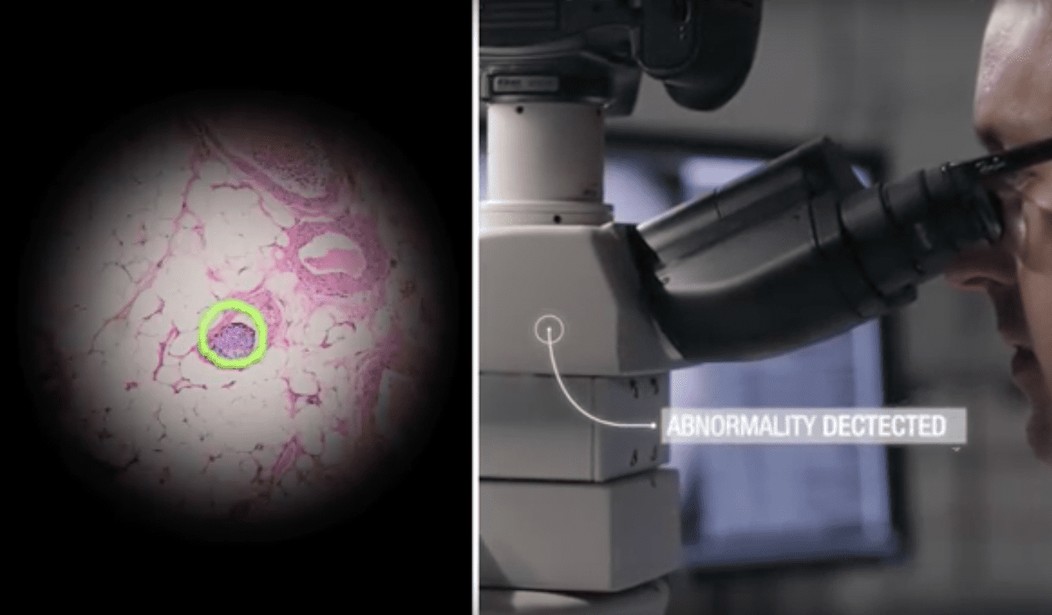On Monday, Google announced a new microscope that uses artificial intelligence (AI) and augmented reality (AR) to identify cancer cells, enabling a speedy diagnosis that could save lives. To achieve this feat, Google hired a team of pathologists to train a computer, enabling the computer to learn what to look for to diagnose cancer early.
“Information is being fed into a computer which is doing billions of calculations and telling me, that’s not the tumor, that’s the tumor,” Dr. Jason Hipp, lead pathologist and consultant at Google, said in a video explaining the new technology.
Google announced the breakthrough at the American Association for Cancer Research’s annual meeting Monday. The new microscope vastly decreases the amount of time it would take for a pathologist to analyze a sample of biological tissue to discern whether there are signs of cancer, and if so, what kind. The breakthrough would also allow small labs and clinics, or doctors in developing countries, to apply the newest learning in cancer research.
At the meeting, Google said the microscope could “possibly help accelerate and democratize the adoption of deep learning tools for pathologists around the world.”
“The tissue slides that pathologists use to diagnose cancer contain a vast amount of information. It’s very time consuming, very fatiguing,” Martin Stumpe, technology lead and engineer at Google, explained in a launch video.
“Every cell needs to be examined, sometimes cancelled. It’s very difficult to recognize,” Dr. Trissa Brown, a pathologist with Google, said.
Stumpe said the tech giant got the idea for the artificial intelligence microscope about a year ago. The new technology “brings augmented reality into an existing microscope to detect cancers in real time. We’re bringing AI directly to the user and meeting them where they are right now.”
“Right now, it detects breast cancer and prostate cancer, but it can work on almost any other cancer type that we train models for,” Stumpe added.
The machine draws on a great deal of information culled from a large team of pathologists. “The knowledge that you’re getting when the microscope points out cancer to you is the knowledge of many pathologists who contributed to training the machine on a model,” the Google technology lead explained.
Google’s team of pathologists went through thousands of images, “teaching the computer what cancer cells look like,” Hipp explained.
“I think it has been very effective at locating areas of concern,” Brown testified. “It’s like getting a second opinion.”
That “second opinion” comes from a robot, from artificial intelligence — but AI developed by a large and impressive team of pathologists.
“The mission is to increase the accuracy and availability of cancer diagnosis and save people’s lives,” Stumpe declared. “I can hardly think of anything that’s more motivating.”
Watch the video announcement below.









Join the conversation as a VIP Member